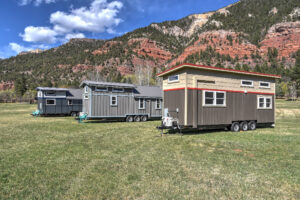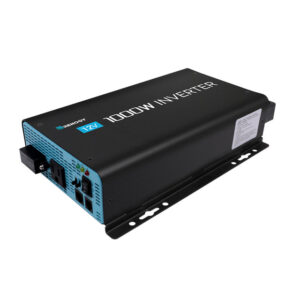
Seize the Sun: Tailoring Solar Solutions for Your Small Home
Imagine a world where your home is not just a place of comfort, but also a powerhouse of clean, renewable energy. That’s the vision that custom solar layouts bring to life, especially for small homes where every square inch counts. With the right design, you can harness the sun’s energy, reduce your carbon footprint, and enjoy the freedom of lower utility bills.
Spark Your Solar Journey: Embracing Renewable Energy
Embarking on a solar journey is like setting sail on a voyage of discovery. You’re not just installing panels; you’re joining a movement towards a sustainable future. Whether you’re a seasoned eco-advocate or new to the green scene, the first step is simple: let the sun in. Solar energy is not a one-size-fits-all solution, and that’s where the magic of customization comes into play.

Project Sunroof 101: The Basics of Custom Solar Layouts
Enter Project Sunroof, Google’s ingenious tool that’s revolutionizing how we approach solar energy. It’s a game-changer for small homes, offering custom solar layouts that make the most of limited space. By analyzing factors like roof size, angle, and shading, Project Sunroof crafts a solar plan that fits your home like a glove.
-
It starts with your address: pop it into Project Sunroof and watch the magic happen.
-
Next, it calculates how much sunlight hits your roof throughout the year.
-
Then, it recommends the number of panels you’ll need, tailored to your energy use.
-
Finally, it estimates your potential savings, painting a clear picture of your solar future.
The Heart of Your Home: Determining Solar Potential
Your home is more than just walls and windows; it’s a living, breathing space where memories are made. And just like the heart pumps life through your body, your roof can pump energy through your home. But before you can turn your small home into a solar powerhouse, you need to know its potential.

Calculating Sunlight Hours: Maximizing Your Roof
It’s all about timing when it comes to sunlight hours. Think of your roof as a sunbather, soaking up the rays. The goal is to catch as many as possible. You’ll want to know when and where the sun hits hardest to position your panels for maximum effect. Here’s the kicker: more sunlight hours don’t just mean more power; they mean more savings.
Project Sunroof takes the guesswork out of this equation. It uses high-resolution aerial imagery to track the sun’s path across your roof. This isn’t just about quantity; it’s about quality. By understanding the intensity of sunlight your roof receives, you can ensure that every panel works its hardest for you.
Unveiling Your Roof’s Solar Score: A Step-by-Step Guide
Knowing your roof’s solar score is like having a secret insight into its energy-producing potential. Project Sunroof simplifies this discovery process. Just follow these steps:
-
Head to the Project Sunroof website and enter your address.
-
Let the tool analyze your roof’s characteristics using Google Earth’s data.
-
Review the detailed report on your roof’s solar score, which reflects how well-suited your home is for solar panels.
-
Consider factors such as local weather patterns and any obstructions like trees or taller buildings.
-
Use this score to guide your decision-making process for a solar installation.

Cost vs. Savings: Making Solar Work for Your Wallet
When it comes to solar energy, the upfront costs can be daunting. But don’t let sticker shock cloud the big picture. Over time, the savings from your solar panels can not only pay for the initial investment but also continue to save you money on your energy bills for years to come.
Understanding Solar Financing Options
There’s a solar financing option for every budget. You can buy your panels outright, lease them, or enter into a power purchase agreement (PPA) where you pay for the electricity they produce, often at a lower rate than your utility. Each option has its pros and cons:
-
Buying panels gives you full ownership and the most savings over time.
-
Leasing lets you save on electricity without the responsibility of ownership.
-
PPAs offer a middle ground with no upfront costs and predictable energy prices.
Estimating Your Savings: A Personalized Report
With Project Sunroof, you can get a personalized savings report that takes into account your specific energy needs and solar potential. This report will show you:
-
How much you could save over the lifespan of your solar panels.
-
The environmental impact of your switch to solar, measured in reduced carbon emissions.
-
How local incentives and rebates can increase your savings.
Armed with this information, you’ll be able to make an informed decision about whether solar is right for you.
Installation Insight: Transitioning to Solar Power
Making the switch to solar power is a big step, but with careful planning, it can be a smooth transition. The key is to work with a reputable installer who can guide you through the process from start to finish.
They’ll help you:
-
Choose the right type of panels for your home’s needs and aesthetics.
-
Understand the timeline, from permitting to the day your panels go live.
-
Navigate any local regulations or requirements for solar installations.
Remember, the goal is to create a sustainable, energy-efficient home that meets your needs today and for years to come.
Choosing the Right Panels for Small Spaces
When space is at a premium, every inch matters. That’s why selecting the right solar panels for your small home is crucial. You’ll want to look for high-efficiency panels that pack a punch in terms of power output per square foot. Lightweight, sleek designs that complement your home’s aesthetics are also a plus.
-
Consider panels with a higher wattage that can generate more electricity in a smaller area.
-
Look into thin-film panels if weight is a concern for your roof structure.
-
Explore integrated solar roofing materials like solar shingles or tiles for a seamless look.
-
Always compare the warranty and lifespan of the panels to ensure long-term value.
Navigating Local Solar Providers: A How-To
Finding a trustworthy local solar provider is like finding a good mechanic. Start by doing your homework. Check out reviews, ask for references, and compare quotes. A good provider will not just sell you panels but will be a partner in your solar journey, offering clear communication and robust support.
Tip: Use online databases and solar energy associations to find certified and rated solar installers in your area.
Once you’ve shortlisted a few providers, ask the right questions:
-
What experience do they have with homes similar to yours?
-
Can they provide a detailed breakdown of costs and potential savings?
-
What warranties and maintenance services do they offer?
-
How do they handle the permitting and inspection process?
Expand Your Solar Knowledge: Keeping Up with Solar Innovations
The solar industry is booming, and staying informed is key to making the most of your investment. From advancements in photovoltaic technology to software that optimizes your energy use, the world of solar is evolving rapidly. Keep your finger on the pulse by following industry news, attending webinars, and joining community groups.
Emerging Trends in Home Solar Technology
-
Bi-facial solar panels that capture sunlight from both sides to increase efficiency.
-
Solar batteries that store excess energy for use during peak times or outages.
-
Smart solar systems that integrate with home automation for optimal energy use.
-
Transparent solar panels that can turn windows into power generators.
-
Peer-to-peer energy trading platforms that allow you to sell excess solar energy.
These innovations not only promise to enhance solar energy production but also aim to make solar systems more accessible and user-friendly.
Maintenance and Monitoring: Long-Term Solar Health
Like any home system, your solar setup needs regular check-ups to perform at its best. Most solar panels are low-maintenance, but keeping an eye on them can prevent small issues from becoming big problems. Here’s what you should do:
-
Inspect your panels periodically for dirt, debris, or damage.
-
Monitor your system’s output to ensure it’s producing the expected amount of energy.
-
Have a professional perform an annual inspection and maintenance check.
-
Stay on top of software updates if you have a smart solar system.
Remember, a well-maintained solar system can last decades, providing clean energy and savings for years to come.

Key Takeaways: Why Google Project Sunroof is a Game-Changer for Small Homes
Google Project Sunroof is transforming the solar landscape for small homes, making it easier than ever to tap into the power of the sun. Here’s why it’s a pivotal tool:
-
Customization: Project Sunroof tailors solar solutions to the unique characteristics of your small home.
-
Accessibility: It demystifies the solar process, providing a user-friendly platform for homeowners.
-
Cost-Effective: By estimating potential savings, it helps you make informed financial decisions.
-
Data-Driven: Utilizes sophisticated algorithms and Google’s vast data for accurate solar assessments.
-
Connection to Experts: Links you with local solar providers, bridging the gap between interest and installation.
FAQs About Solar Energy for Small Homes
Can my tiny home really benefit from solar panels?
Absolutely! No home is too small to reap the benefits of solar energy. In fact, tiny homes are often ideal candidates due to their reduced energy needs. With the right system, you can significantly cut your energy bills and even achieve net-zero living.
What are the initial costs for a small home solar setup?
Initial costs can vary, but they typically include the solar panels, inverter, batteries (if opting for storage), and installation. For small homes, these costs can be lower due to the smaller system size needed. Additionally, tax credits and rebates can help offset these expenses, making solar more affordable than you might think.
How does roof shape affect solar panel layout?
The shape of your roof plays a crucial role in determining the best solar panel layout. A simple, unobstructed roof allows for an easier and more efficient setup. However, even with complex roof designs, creative solutions and advanced technology can optimize panel placement for effective energy production.

Are there any government incentives for going solar in small homes?
The answer is a resounding yes! Government incentives are a big piece of the solar puzzle, making it more affordable for homeowners to go green. These incentives can come in the form of tax credits, rebates, and grants that can significantly lower the cost of your solar system. The federal government offers a solar investment tax credit (ITC), which allows you to deduct a portion of your solar costs from your taxes. Additionally, many states and local governments have their own incentives, which can stack with federal benefits, sweetening the deal even further.
-
Research federal, state, and local incentives to understand what you qualify for.
-
Consult with a tax professional to ensure you’re taking full advantage of available credits.
-
Keep an eye out for new incentives, as policies can change with shifting political climates.
-
Remember, these incentives not only reduce your upfront costs but also improve the return on your investment over time.
What should I look for when choosing a solar installer?
Choosing a solar installer is a critical decision that can impact the success of your solar project. You want a team that’s not only skilled but also shares your vision for a sustainable home. Here’s what to keep in mind:
-
Experience and Expertise: Look for an installer with a strong track record of working with small homes.
-
Licensing and Insurance: Ensure they are fully licensed to operate in your area and carry adequate insurance.
-
Quality of Products: Verify that they use high-quality panels and equipment with robust warranties.
-
Transparency: A good installer will provide a clear and detailed proposal, including costs, timelines, and expected savings.
-
Customer Service: Choose someone who values communication and will support you throughout the installation and beyond.
Remember, the right installer will not only install your system but also be a partner in maintaining it for years to come.
In conclusion, custom solar layouts are not just a trend; they are the future of home energy. With tools like Google Project Sunroof and the growing accessibility of solar technology, there’s never been a better time to consider solar energy for your small home. Government incentives, coupled with falling prices for solar equipment, make it an economically wise choice as well.
As we’ve seen, going solar is more than just an individual benefit; it’s a collective step towards a cleaner, more sustainable future for our planet. By taking the leap into solar energy, you’re not only cutting down on your utility bills but also contributing to a global movement that values renewable resources and environmental stewardship.
So, take a moment to imagine the possibilities. Envision your home, not just as a shelter, but as an active participant in the energy ecosystem, a beacon of sustainability in your community. With the right approach, you can make that vision a reality. The sun is shining, and it’s time to seize its limitless power for your home. Let’s make the most of it, together.
Frequently Asked Questions
Can I install solar panels myself to save on costs?
While it’s possible to take a DIY approach to solar installation, it’s generally not recommended unless you have professional experience. Solar installations involve complex electrical work and must adhere to local building codes. For safety and efficiency, it’s best to work with a certified solar installer.
How long do solar panels last?
Solar panels are built to last and typically come with a warranty of 25 to 30 years. However, they can continue to produce electricity well beyond that time frame, albeit at a slightly reduced efficiency rate.
Will solar panels damage my roof?
When installed correctly by a professional, solar panels should not damage your roof. In fact, they can protect the areas they cover from the elements. If you have concerns about your roof’s ability to support solar panels, a reputable installer will be able to assess its condition and recommend the best course of action.
Do solar panels require a lot of maintenance?
Solar panels require very little maintenance. Occasional cleaning to remove debris and ensure maximum efficiency is typically all that’s needed. Most systems also come with monitoring software to alert you to any issues.
What happens with solar panels during a power outage?
If your solar system is connected to the grid, it will shut off during a power outage to prevent back-feeding electricity and protect utility workers. If you have a solar battery backup, you can continue to use stored solar power during an outage.
Embracing solar energy for your small home is an investment in your future and the planet’s. With the right information and a trusted solar installer, you can enjoy the myriad benefits that solar power has to offer. The sun is our most abundant resource; let’s harness its potential and light up our homes with clean, renewable energy.



